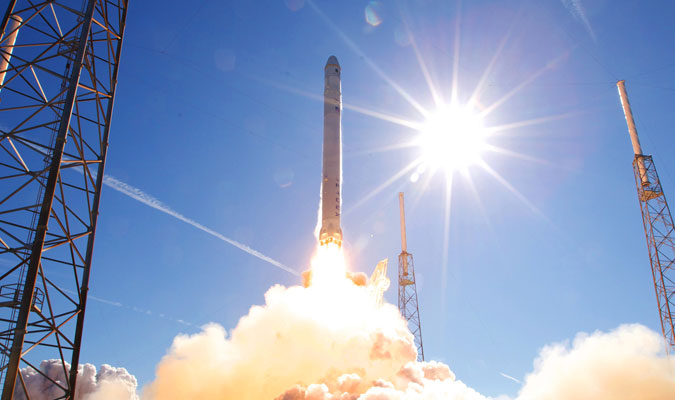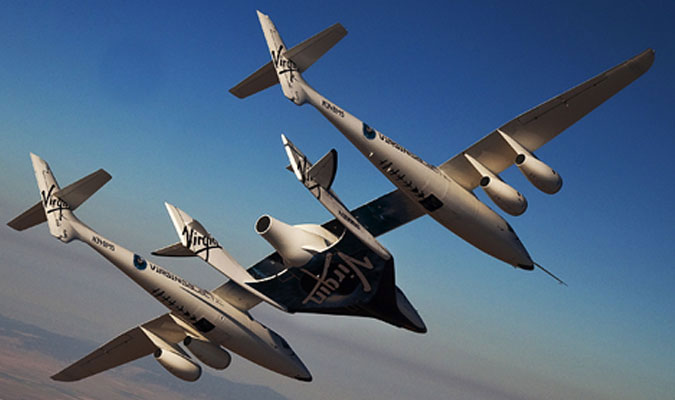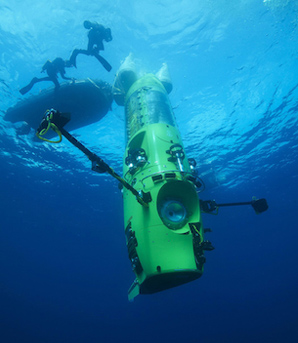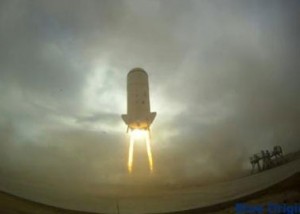


Private Space Travel is Here
Private Space Travel is Here
If you are alive today, you have a very real opportunity of traveling to space before you die. Whether you personally fly to space or not, private space travel will have a tremendous effect on all our lives.
Advances in private space travel, once the domain of a privileged few, are making it possible for everyday people to have the profound experience of space flight. Armchair astronauts can finally live the dream on board passenger spacecraft built by Virgin Airlines founder Richard Branson and Burt Rutan, the designer of history-making SpaceShipOne. Virgin Galactic’s passenger spacecraft can carry six people to the edge of space where they float weightless and view the awesome Earth below.
Other prominent millionaires investing some of their fortunes in private space travel include Jeff Bezos, founder of Amazon.com. This successful book entrepreneur is developing a spacecraft that flies like those envisioned in early science fiction novels. Elon Musk, founder of Paypal, created Space X and the Falcon 9 rocket that soon carry astronauts to the International Space Station. Robert Bigelow, founder of theBudget Suites hotel chain, is test-flying inflatable cabin modules for a future space hotel.
Many of us from all walks of life want to space-travel. We have dreamed of these journeys while enjoying space-themed movies, TV programs and books. Space travel is compelling, whether it’s the desire to have a life-changing view of Earth from orbit or to float weightless in space as in our flying dreams.
Polls show that over half of us would like to travel in space. The list includes celebrities such as actor Tom Hanks, movie director James Cameron and renowned physics professor Stephen Hawking; as well as everyone from high school teachers to starry-eyed children, to me and maybe you too.
If someone had told your great-great-grandfather back in 1904—when the Wright Brothers took their short but historic flight—that within a decade a passenger airline service would be operating in America, he probably would have laughed—along with the rest of the world. Today, thanks to the Wright Brothers and others, the everyday person can take an afternoon suborbital flight to the edge of space or go all the way to orbit and circle the entire planet every ninety minutes while floating weightless.
We are entering a new space age – the dawning of a space-traveler society here on Earth.

Submarine Travel
From Oceans to Space
More people have walked on the moon than traveled to the deepest depths of the oceans.
On March 26, 2012 filmmaker James Cameron joined the only other two humans who have traveled to the deepest realms of the Earth’s ocean – plunging nearly 11km (seven miles) down to the deepest place in the ocean, the Mariana Trench in the western Pacific.
Cameron’s trip is the first attempt by humans to reach the Challenger Deep, the deepest point of the Mariana Trench, since two Navy men touched bottom inJanuary 1960. On that trip, Don Walsh and Jacques Piccard spent a mere 20 minutes on the bottom inside the bathyscaphe Trieste, the only two humans before Cameron to travel the deepest point in the ocean abyss.
“Adventuring under the sea is an unearthly experience,” wrote aquanaut William Beebe in 1960. “And in all except one sense we are actually entering a new world when we put on a diving helmet and float down to the white coral sand. The only other place comparable to these marvelous nether regions must surely be naked space itself, out far beyond atmosphere, between the stars, where sunlight has no grip upon the dust and rubbish of our planetary air, where the blackness of space, the shining planets, comets, suns and stars must really be closely akin to the world of life as it appears to the eyes of an awed human being in the open ocean a half mile down. In my present existence there is only one experience left which can transcend that of living for a time under the sea—and that is a trip to Mars.”
When orbiting in the blackness of space, space travelers relish the deep blue view of the oceans that cover approximately 3/4 of Earth’s surface.
Ocean travelers, on the other hand, don’t simply look down at Earth from space. Seafarers are part of the planet and subject to the power of weather and waves. Alone on a vast horizon except for shipmates and the ship, all you have to do is look up into the sky to realize you’re already in space.
As for the undersea world, almost anyone can experience the watery realm without even getting wet, thanks to a variety of submarines.
A weekend sub-sea traveler can explore depths up to 200 feet inside a comfortable tourist submarine. The more adventurous can ride a specialized deep-diving submersible to visit the historic Titanic or giant pink tubeworms living next to undersea volcanoes. For a truly enveloping near-space experience, try snorkeling or scuba diving in the deep blue vastness of the ocean surface.
Common Sense Insights of Space Travel
Traveling to space can create profound changes in a person’s life.


